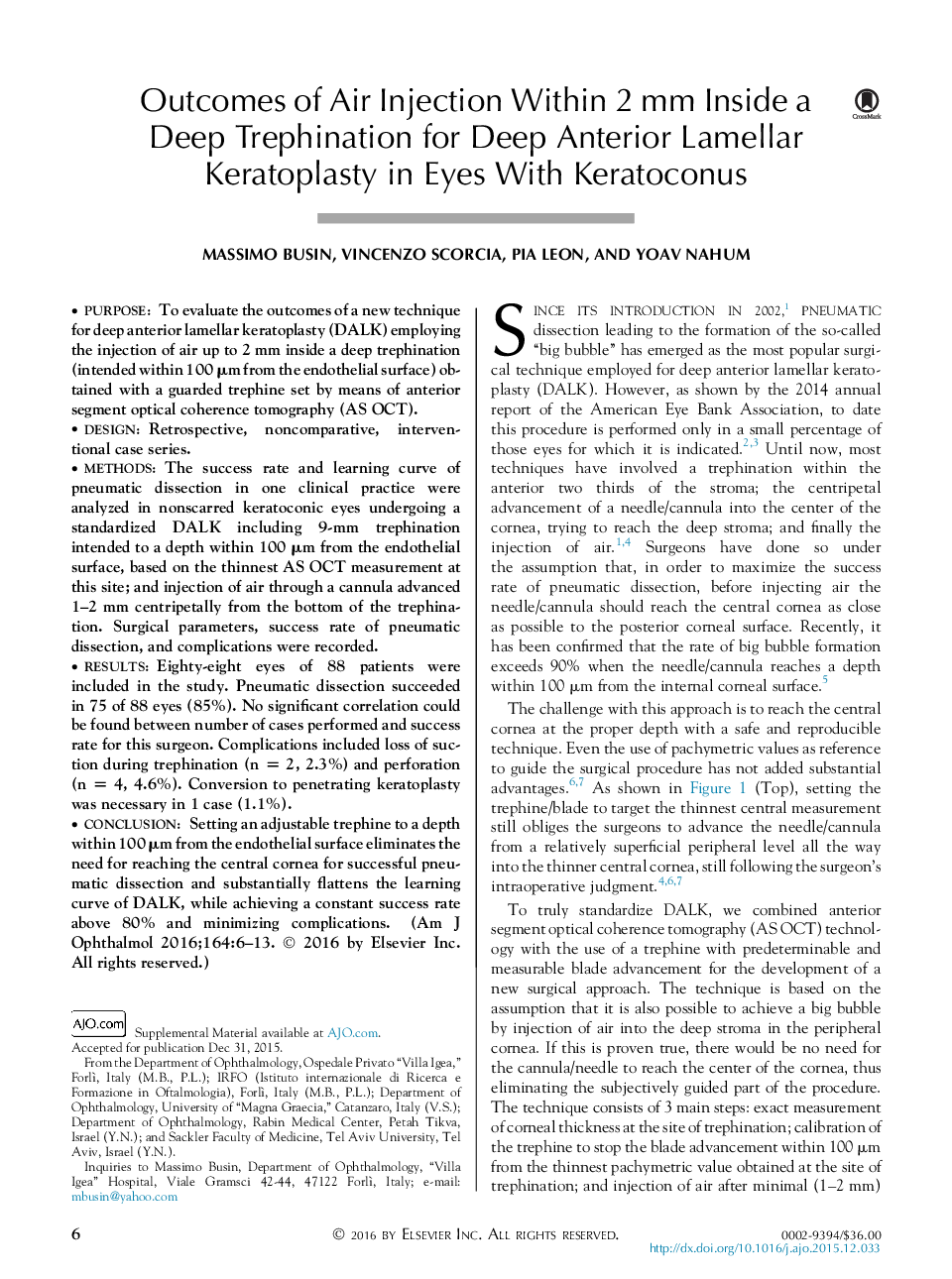| Article ID | Journal | Published Year | Pages | File Type |
|---|---|---|---|---|
| 4001796 | American Journal of Ophthalmology | 2016 | 8 Pages |
PurposeTo evaluate the outcomes of a new technique for deep anterior lamellar keratoplasty (DALK) employing the injection of air up to 2 mm inside a deep trephination (intended within 100 μm from the endothelial surface) obtained with a guarded trephine set by means of anterior segment optical coherence tomography (AS OCT).DesignRetrospective, noncomparative, interventional case series.MethodsThe success rate and learning curve of pneumatic dissection in one clinical practice were analyzed in nonscarred keratoconic eyes undergoing a standardized DALK including 9-mm trephination intended to a depth within 100 μm from the endothelial surface, based on the thinnest AS OCT measurement at this site; and injection of air through a cannula advanced 1–2 mm centripetally from the bottom of the trephination. Surgical parameters, success rate of pneumatic dissection, and complications were recorded.ResultsEighty-eight eyes of 88 patients were included in the study. Pneumatic dissection succeeded in 75 of 88 eyes (85%). No significant correlation could be found between number of cases performed and success rate for this surgeon. Complications included loss of suction during trephination (n = 2, 2.3%) and perforation (n = 4, 4.6%). Conversion to penetrating keratoplasty was necessary in 1 case (1.1%).ConclusionSetting an adjustable trephine to a depth within 100 μm from the endothelial surface eliminates the need for reaching the central cornea for successful pneumatic dissection and substantially flattens the learning curve of DALK, while achieving a constant success rate above 80% and minimizing complications.
